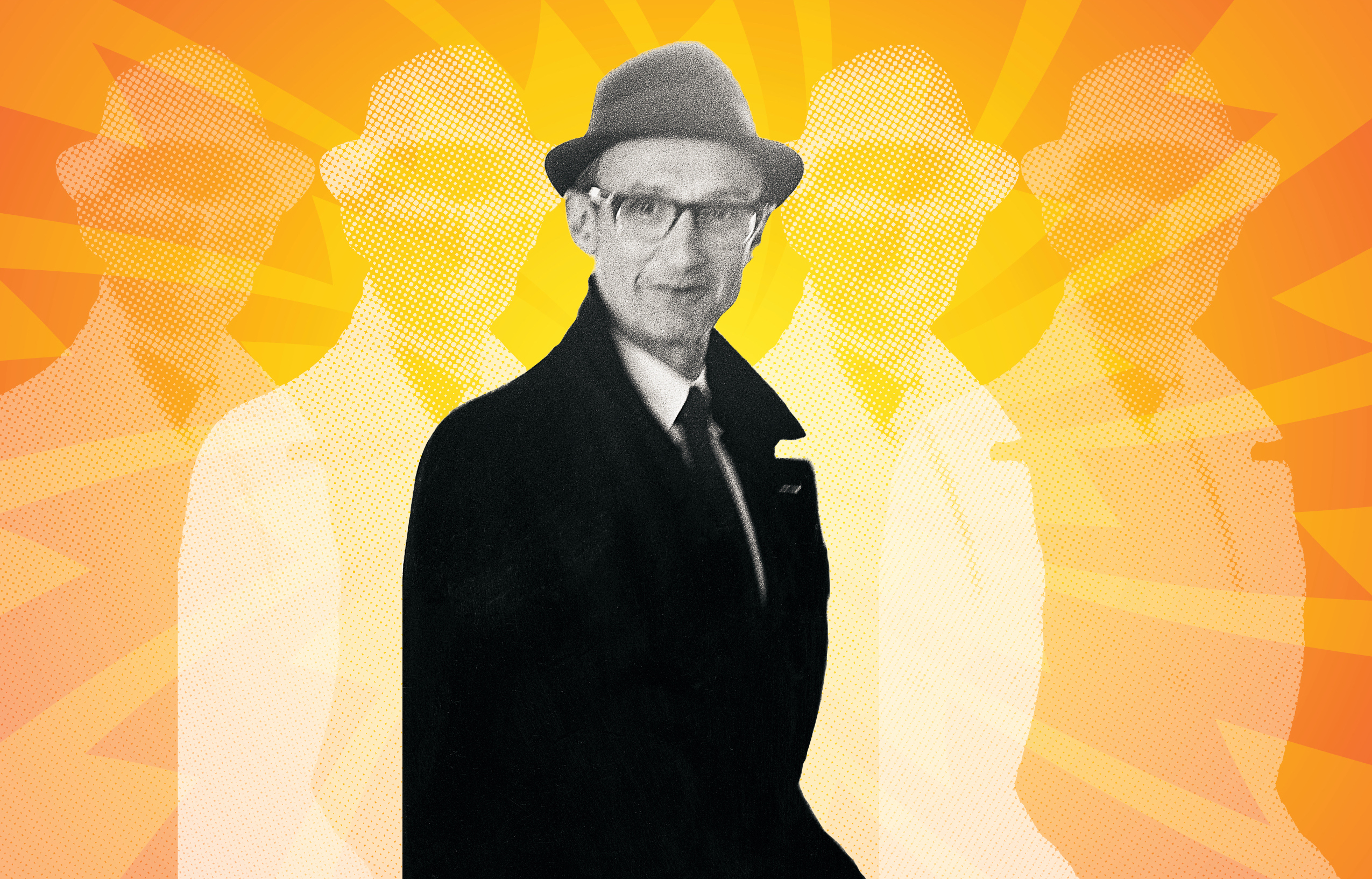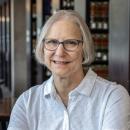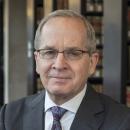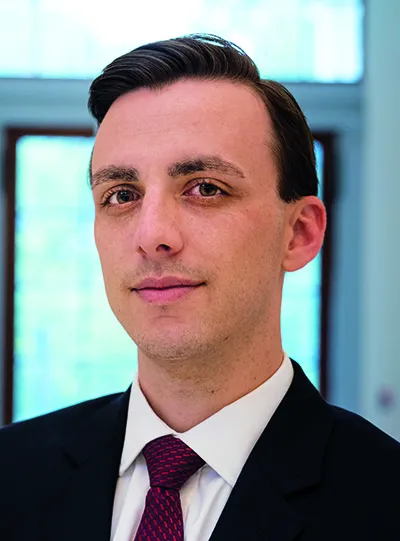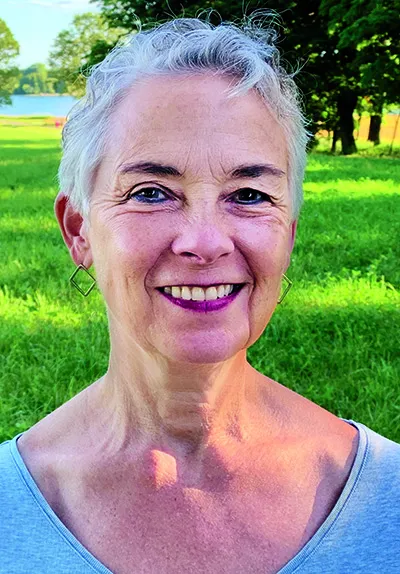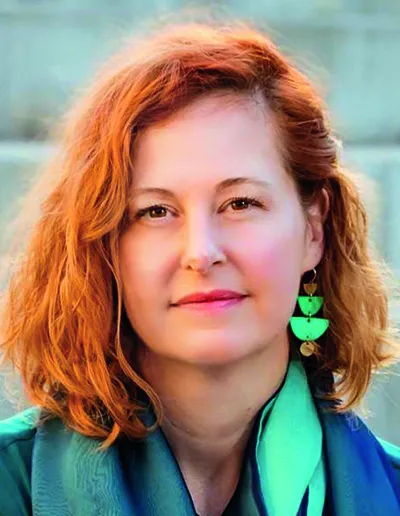The ‘Comic-Con of Tax’

The hype begins midsummer when the “save the dates” hit inboxes around the globe.
If you are lucky enough to get that email—this year just 374 people made the list—you know to jump when tickets go on sale. There are only 134 spots. Last year they sold out in three minutes flat.
This sought-after event isn’t a rock concert or a Hollywood premiere. It is the hottest ticket in the tax law world—an annual University of Chicago Law School-sponsored event that draws top scholars, leading practitioners, and key government officials for two days of discussion about the field’s most critical issues. This is where the experts convene to talk about the implications of new developments like cryptocurrency, where government officials gather feedback that can help shape policy, and where top tax minds ponder how they would reinvent the taxation of international transactions if they could scrap the system and start over from scratch.
“I call it the Comic-Con of tax,” joked Rachel Cantor, ’00, a Kirkland & Ellis partner who has chaired the event for two years, referring to the popular comic book convention that draws thousands to San Diego each year.
Welcome to the Federal Tax Conference, a storied event that celebrates its 75th year this November—a longevity made rich, and made possible, by the personalities, expertise, and intellectual rigor of the Law School.
The Federal Tax Conference began in the late 1940s, as America boomed with post-World War II optimism. For almost 50 years it thrived under the dynamic leadership of legendary Law School Professor Wally Blum, one of the most important and innovative tax law scholars of the mid-20th century. Since then the conference has morphed like a chameleon, adapting to challenges ranging from Blum’s death to the growth of competing conferences to the worldwide COVID-19 pandemic.
The event still lures tax professionals with classic University of Chicago intellectual engagement. Ideas aren’t merely presented, they are vigorously critiqued. The resulting papers are published each year in a special volume of the journal TAXES, where they allow practitioners to grab the eyes of Treasury and Internal Revenue Service officials and potentially shape policy.
“We’re getting a chance to express our opinions and our beliefs, based both on what we know about how clients work and what they want and on our own views about what constitutes abuse and what does not. We also get to discuss which proposed reforms are likely to work (or fail) and why,” said Julie Roin, the Seymour Logan Professor of Law and the conference’s faculty advisor since 1998.
Even for those who will never garner a coveted invite, these topics matter. As Roin points out, “tax law is relevant to every business transaction.”
A Long History Shaped by a Legend
Every iconic event has a de facto historian and, for the tax conference, it is Sheldon I. Banoff, ’74, a past conference planning committee chair who last spring published a 22,000-plus-word treatise in TAXES magazine on the event, complete with 212 footnotes. (“I am the Methuselah of the conference members,” Banoff quipped. “I’ve been going for 930 years, just like Methuselah.”)
Banoff’s deep dive into the conference history found that the initial event wasn’t even connected to the Law School; it actually began as a University of Chicago business school gig.
“Back in the ’40s, the School of Business was more at the cutting edge for tax-related matters than was the Law School, which had all the different areas of law to contemplate,” Banoff hypothesized.
But by the second year, the wondrous Walter J. Blum, AB ’39, JD ’41, entered the picture. Blum—who is remembered fondly for his biting sense of humor, his super-Socratic techniques, and his enormous collection of distinctive ties (Professor Geoffrey Stone, ’71, a former Law School dean, still has a Blum tie he purchased at an auction displayed on a shelf in his office)—was already a respected scholar. “Wally” became synonymous with the tax conference, serving as the faculty advisor from 1949 until his death in 1994. Everything from that time bears his fingerprints.
Blum joined the planning committee, which shifted the conference from one day a week for five consecutive weeks to three days in a row. A robust 400 or 500 tax lawyers, academics, and government officials attended during that era, enough to fill about half of the cavernous auditorium in the Prudential Building. Blum also convinced TAXES magazine to start publishing papers from the conference.
From the start, the conference and the intellectual work produced there mattered. Robert R. Wootton, a retired Sidley & Austin partner and Emeritus Professor of Practice at Northwestern Pritzker Law School, first attended in 1986. He said tax lawyers collected complete sets of TAXES the way other people collected National Geographic volumes.
“It was unique in all of the country in putting together extraordinarily useful, deep, well-researched articles by leading practitioners,” Wootton said. “To be asked to write a paper for the Chicago tax conference was a big damn deal. And people said yes an awful lot more than they said no.”
The standards, from early on, were supremely high.
“Wally’s goal was to have the best tax conference with the best speakers,” remembered Howard Krane, ’57, a retired Kirkland & Ellis partner who first attended the conference in the late 1960s. “[He thought] we should do only cutting-edge material and only with speakers from throughout the country. [It was] not limited to Chicago speakers, which I think was a really brilliant decision … Without the cutting-edge material you couldn’t get the good speakers, and without the good speakers you couldn’t get people to come and see it.”
“[W]e started getting calls from people who wondered if they could be invited. People said, ‘You know, everybody who’s anybody is in Chicago.’”
Even though others served as chair of the planning committee, including Krane for a stint in the 1970s, it was Wally’s world. “As long as he was there, it was his prerogative, it was his committee, and he was the boss,” Krane said.
Eventually, however, the world began to change in ways that tested the conference. A new publisher bought TAXES magazine and wondered why the magazine took on the work of publishing the tax conference papers, chasing down authors long after the stated deadline. And the beloved Blum died of cancer in December 1994, without an obvious heir to the faculty advisor role. The conference muddled along, but by 1998, planners wondered: would the event survive?
Jeffrey T. Sheffield, BA ’76, a partner at Kirkland & Ellis and then the tax conference chair, worked to steady the ship. He met with the new publisher of TAXES and negotiated new timing for the annual publication of the tax conference papers, giving those preparing papers more time to get them in. On the Law School side, the key was finding a new faculty advisor to fill Blum’s big shoes.
“There had to be a reengagement by the Law School,” recalled Professor Douglas Baird, who was the dean at the time. “It is all very well to say how important it is, but that’s not the same thing as finding people on the ground who were going to be invested in it.”
Fortuitously, Julie Roin was hired in 1998 and has been the faithful faculty liaison ever since.
Overcoming Obstacles in a New Era
More challenges were just around the corner, however. States established continuing legal education requirements for their bars, and the Practising Law Institute expanded its offerings, creating competition that ate into the conference’s audience. By the turn of the millennium, attendance dwindled from hundreds down to dozens, some of them government officials who were there on free passes. As Wootton took over as chair, it was clear something needed to change.
“Quite frankly, it was sort of dying, and the reason that it was sort of dying is it had become more or less a continuing legal education-type conference, and the tax bar just had a million of these continuing legal education conferences. There was no particular reason to think, ‘I’ll go to the University of Chicago’s federal tax conference,’” Roin remembered.
That year’s planning committee, guided in part by the ideas of then-outgoing chair Robert H. Aland, brainstormed and completely reinvented the event. They doubled down on the sweet spot in between practice and academia that other conferences missed. They moved it to the Gleacher Center (the downtown home of the University of Chicago’s Booth School of Business), which features a large, tiered classroom-style auditorium, better for facilitating audience engagement. The conference is also now just a day and a half, making it doable for attendees to fly in from across the country and even from OECD countries, mostly the United Kingdom.
Audience engagement became a more intentional focus. At the Prudential, it was more a spectator event. Now speakers rarely go more than 15 minutes before the audience jumps in to critique their argument.
“I think one of the issues that we found with the conference before the reformat was that even if the room was filled with tax geniuses, if they hadn’t had the chance to think about what the author had just said—the papers were often quite dense, and they were brilliantly presented by top practitioners in the country—it [could be] a little difficult to stick up your hand,” Wootton recalled. “So what we wanted to do is to get people [in the audience] who were equally capable, who had really worked with the author and were prepared to make some comments. Just sort of loosen it up a little bit, [to create] a little back and forth between the speaker and the commenter and then, explicitly, to give time—lots of time—to the people in the audience.”
The new audience was special, too. That first-year list included tax superstars such as Harvard Law Professor Alvin C. Warren Jr., ’69, and Peter C. Canellos, who is known as the dean of the New York tax bar. (The conference has never been territorial about only having Law School affiliates either as presenters or planning committee members). The committee members made personal calls inviting participants to this revamped event.
“Wally’s goal was to have the best tax conference with the best speakers.”
“It brought me to tears,” Wootton said. “[Canellos] said, ‘Of course I will come. I want to honor Wally.’ It was really Walter Blum that in some respects pulled it together years beyond the grave, because people thought that highly of him and what he had created.”
Finally, the committee hung on to what worked well—the world-class papers published annually in TAXES.
“It was a tremendously successful conference because everyone had a great time,” Roin said. “It was from both a substance standpoint and a social and a professional standpoint, just really great. By year two, we were turning people away.”
“Like the Chicago River, the flow kind of reversed, and we started getting calls from people who wondered if they could be invited,” Wootton recalled. People said, ‘You know, everybody who’s anybody is in Chicago.’”
Making an Impact Today
The almost two decades since the reboot have just built on that success. The rock-star tax audience includes key government officials who seek feedback from those in attendance that can actually shape policy.
“One of the interesting things about this conference is that the government representatives actually ask questions rather than just recite prefixed speeches,” says Paul D. Carman, the current conference chair and partner at Chapman and Cutler. “This is a conference for people where the government is actually trying to figure out what it should do on difficult issues. [Government officials] don’t always do what we [the lawyers] want them to do, but they listen and they engage. And rather than just saying, ‘This is what the regulation says,’ the conference is an opportunity to really have input in the process of their development.”
A recent example of this is cryptocurrency, for which there is little law so far. A panel last year tackled that topic. A Treasury official in the audience opined that when you have a split of crypto, it is income on the property, similar to rental income on real estate. The lead speaker argued that a split is a division of property, like when an owner splits a piece of real estate, but has not yet sold it and therefore does not yet owe taxes. The difference between “on” and “of” makes the difference between whether it was ordinary income or no income at all.
“I don’t know if the legal analysis moved, but it became much more clear what the issues were,” Carman recalled.
These legal issues get hashed out amid whatever new challenge the world throws at the venerable conference. The most recent test was the COVID pandemic. When things shut down in March 2020, the planning committee was just firming up topics for the following fall.
“This was obviously uncharted territory,” said Cantor, who was the chair for both 2020 and 2021. The fall of 2020 ended up being a successful virtual event, with many of the same things that make the in-person event so magical—a select guest list and robust audience engagement, even on Zoom.
“It was still early enough that people would engage in that,” Cantor said. “I think as the pandemic wore on … that became harder and harder to do well.”
By 2021, many folks were desperate for in-person engagement, but also remained wary of the risks of the virus. Cantor and her committee, clear that the appetite for more Zoom conferences was waning, pushed forward with a fully in-person conference. The conference fell fortuitously in between the Delta and Omicron surges and, with a fully masked audience, went off without a hitch.
“There were a bunch of people who said they weren’t going to go to dinner because people were worried about it, and then a whole lot of them asked to come to dinner anyway. They were like, ‘This is great. We are in person. It’s wonderful.’ But it took a really long time to plan. There was just constant uncertainty,” Cantor recalled.
What remains certain—after 75 tumultuous years—is that the magic of the tax conference is a quintessential University of Chicago story.
“Scarcity drives your price up,” Cantor said. “There’s no question that everybody in that room knows that they got the hot ticket and they’re thrilled to be there because it’s exciting to be one of the chosen ones who gets to be in the room.”
